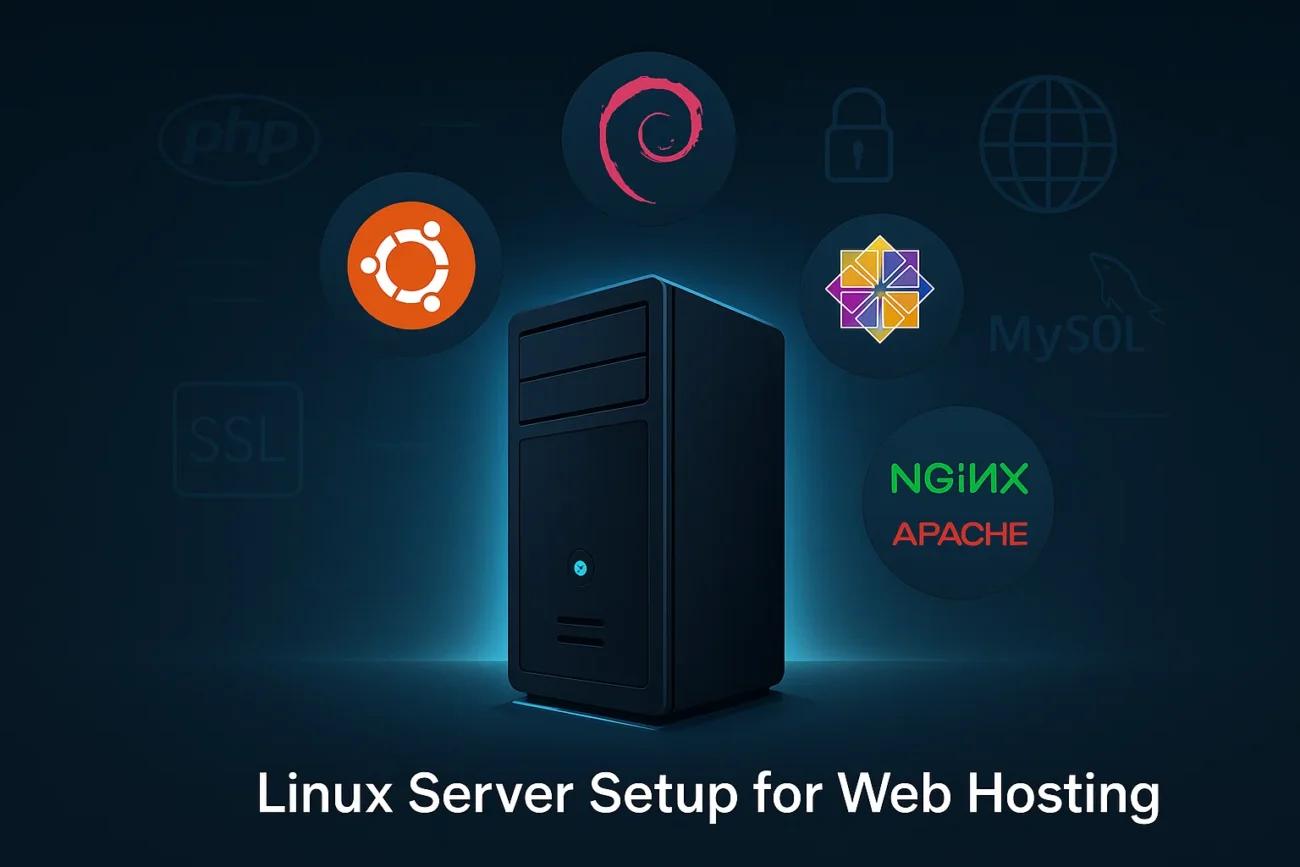If you’re planning to host a website on a Linux server, one of the first and most crucial decisions you’ll face is: Which version of Linux is best for web hosting, and what software packages do you need to install?
In this comprehensive guide, we’ll break down everything — from choosing the right Linux distribution for web hosting to setting up a complete LAMP/LEMP stack for hosting websites, blogs, or applications. Whether you’re hosting a WordPress site, an eCommerce store, or a custom PHP application, this post has you covered.
Table of Contents
Why Use Linux for Web Hosting?
Before diving into versions and packages, here’s why Linux dominates web hosting:
- Stability & Reliability: Linux servers can run for years without needing a reboot.
- Security: With proper configurations, Linux is more secure than other OS options.
- Open Source & Free: No licensing fees.
- Vast Community Support: Abundant documentation, forums, and tutorials.
Nearly 70% of all websites on the internet are hosted on Linux-based servers — including giants like Facebook and Google.
Best Linux Distributions for Web Hosting (2025)
Here’s a breakdown of the most popular Linux distros for hosting websites, tailored for different use-cases:
| Linux Distro | Best For | Package Manager | Pros | Cons |
|---|---|---|---|---|
| Ubuntu Server (22.04 LTS) | Beginners, general-purpose hosting | apt | Easy to use, LTS support, vast tutorials | Slightly heavier than minimal distros |
| Debian (12 Bookworm) | Stability-focused servers | apt | Very stable, great for production | Less up-to-date software versions |
| CentOS Stream 9 / AlmaLinux 9 / Rocky Linux 9 | Enterprise-grade hosting | dnf/yum | Red Hat-compatible, good for cPanel | Complex for new users |
| Arch Linux | Advanced users | pacman | Full control, bleeding-edge packages | Not beginner-friendly |
| OpenSUSE Leap | Custom infrastructure | zypper | YaST control panel, professional tools | Less popular in web hosting community |
Recommended for Beginners & Most Web Projects:
Ubuntu Server 22.04 LTS or
Debian 12 Bookworm for those who prefer stability over newer packages.
Essential Packages to Install for Linux Web Hosting
After setting up your Linux server, the next step is to install essential packages to host your website. Depending on your stack (LAMP vs LEMP), your needs may vary.
For Apache-based Hosting (LAMP Stack)
LAMP = Linux + Apache + MySQL/MariaDB + PHP
sudo apt update && sudo apt upgrade
sudo apt install apache2 mariadb-server php php-mysql libapache2-mod-php
Optional Modules:
sudo apt install php-curl php-gd php-mbstring php-xml php-zip
Enable Apache Mods:
sudo a2enmod rewrite
sudo systemctl restart apache2
For Nginx-based Hosting (LEMP Stack)
LEMP = Linux + Nginx + MySQL/MariaDB + PHP (FPM)
sudo apt update && sudo apt upgrade
sudo apt install nginx mariadb-server php-fpm php-mysql
Important PHP Modules:
sudo apt install php-cli php-curl php-gd php-mbstring php-xml php-zip
Configure Nginx for PHP:
Make sure your server block has:
location ~ \.php$ {
include snippets/fastcgi-php.conf;
fastcgi_pass unix:/var/run/php/php8.1-fpm.sock;
}
Database Packages
Choose between:
- MySQL Server: Traditional and widely supported.
- MariaDB: Drop-in replacement for MySQL, more open-source driven.
sudo apt install mysql-server
or
sudo apt install mariadb-server
Don’t forget to secure your DB:
sudo mysql_secure_installation
Recommended Security Tools
| Package | Use |
|---|---|
| ufw / firewalld | Firewall configuration |
| fail2ban | Protect from brute-force |
| certbot | Free SSL with Let’s Encrypt |
| rkhunter | Rootkit scanner |
| logwatch | Log monitoring tool |
Optional Tools & Performance Boosters
- phpMyAdmin – GUI for managing MySQL/MariaDB
- Webmin – Web-based server management
- Varnish Cache – For speeding up page loads
- Redis / Memcached – Object caching
- Git – For version control and deployments
- Docker – If you prefer containerized environments
GUI vs Command Line: Do You Need a Desktop Environment?
For VPS or cloud hosting, avoid installing GUI like GNOME/KDE — it consumes memory and is unnecessary for headless hosting. Stick to SSH-based server management. Tools like:
screenortmux— for persistent sessionshtop— system monitoringnano,vim, orneovim— for editing configs
Web Hosting Panels (Optional)
If you want a GUI to manage your websites, domains, emails, etc., consider:
| Panel | Free/Paid | Best For |
|---|---|---|
| cPanel/WHM | Paid | Reseller, production hosting |
| Webmin/Virtualmin | Free | Small to medium servers |
| CyberPanel | Free/Paid | OpenLiteSpeed hosting |
| HestiaCP | Free | Simple web admin interface |
| ISPConfig | Free | Multi-server setups |
Domain Configuration & Hosting Setup
Don’t forget the domain part of web hosting:
- Update DNS Records: Point A record to your Linux server’s IP.
- Install SSL Certificate: Use Let’s Encrypt via
certbot. - Configure Virtual Hosts: In Apache (
/etc/apache2/sites-available) or Nginx (/etc/nginx/sites-available). - Restart Web Server:
sudo systemctl restart apache2
# OR
sudo systemctl restart nginx
SEO and Performance Considerations
To make your Linux-hosted site load faster and rank better on Google:
- Enable GZIP compression
- Use Browser Caching
- Install PageSpeed Module (mod_pagespeed or ngx_pagespeed)
- Use HTTP/2 (enabled by default in Apache2/Nginx)
- Install CDN like Cloudflare
- Optimize images and minify JS/CSS
Final Thoughts
Hosting on Linux offers flexibility, performance, security, and cost-efficiency. Whether you’re launching a personal blog or managing multiple client websites, choosing the right Linux distribution and packages is the foundation of a successful web hosting setup.
Recommended Setup for 2025:
- OS: Ubuntu Server 22.04 LTS
- Stack: LEMP (Nginx + MariaDB + PHP 8.1)
- Security: UFW, Fail2Ban, Certbot
FAQs: Web Hosting on Linux
Q1: Can I host multiple websites on one Linux server?
Yes, using Virtual Hosts in Apache or Server Blocks in Nginx.
Q2: Is Linux better than Windows for hosting?
For most web hosting needs (PHP, WordPress, Laravel), Linux is more stable and cost-effective.
Q3: Which Linux distro is best for cPanel?
CentOS Stream 9, AlmaLinux 9, or Rocky Linux 9 are recommended.

